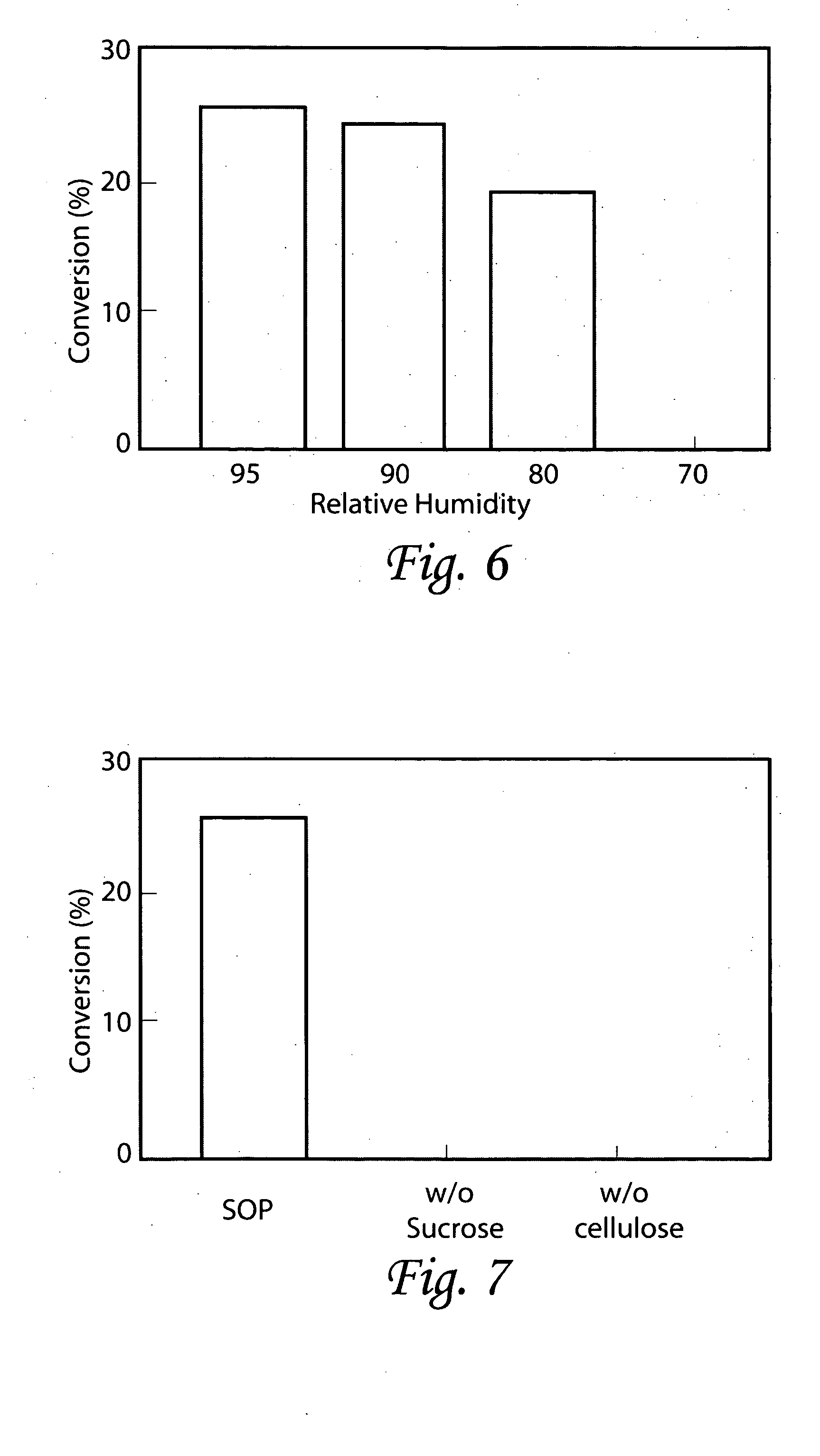Method of ex vitro sowing, germination, growth and conversion of plant somatic embryos or germinants, and nutrient medium used therefor
a technology germinants, applied in the field of ex vitro sowing, germination, growth, and conversion of plant somatic embryos or germinants of conifer species, can solve the problems of no approach taught or otherwise disclosed, low return on investment, and in vitro protocols, so as to facilitate the absorption of nutrients, eliminate poor plant-soil contact, and high quality
- Summary
- Abstract
- Description
- Claims
- Application Information
AI Technical Summary
Benefits of technology
Problems solved by technology
Method used
Image
Examples
example 1
[0124] The objective of this experiment was to study the effects of different carbohydrate compositions in nutrient medium used for ex vitro growth of conifer germinants from somatic embryos.
Methods
[0125] Traditionally, sucrose is the primary carbon and energy source in plant tissue culture media. Mature plant somatic embryos are routinely germinated in vitro on sucrose nutrient medium and grown into transplantable plants. Maltose and other soluble carbohydrates may be used in various stages of somatic embryogenesis, such as in maintenance media for tissue proliferation and in maturation media for somatic embryo induction (see U.S. Pat. Nos. 4,801,545, 5,036,007 and 5,563,061). In in vitro studies carried out by the inventors of the present invention have shown that a variety of carbon sources, including a combination of glucose and fructose as well as sucrose, can promote growth of loblolly pine somatic embryos. Since sucrose hydrolyses into glucose and fructose in the medium (Tr...
example 2
[0130] The objective of this study was to compare the effect of different gelling agents in nutrient medium on non-sterile ex vitro growth of conifer germinants from somatic embryos.
Methods
[0131] Many gelling agents are currently being used in the production of tissue culture media. Agar is by far the most popular although phytagel is gaining recognition. Gelcarin is a cheaper alternative to agar and phytagel. This experiment compared the use of agar, phytagel, and gelcarin in the nutrient medium and assessed their effects on ex vitro growth of germinants from conifer somatic embryos.
[0132] Before experimental use, somatic embryos of interior spruce (genotype IS 1) were desiccated and frozen-stored for seven months. Somatic embryos of radiata pine (genotype RP 2) were stored in HRHT plates@4° C. for ten and nine months, respectively. In the experiment, somatic embryos of interior spruce were first cultured on a 0.8% w / v phytagel semi-solid medium at room temperatures for one day....
example 3
[0135] The objective of this study was to examine various concentrations of α-cellulose in nutrient medium used for non-sterile ex vitro growth of germinants from conifer somatic embryos.
Methods
[0136] Experimental embryos were taken from interior spruce (genotype IS 2), stored on HRHT plates at 4° C. for six months), radiata pine (genotype RP 3, stored in HRHT plates at 4° C. for six months) and Douglas-fir (genotypes DF 2 and 3, desiccated and stored @4° C. for two months). Embryos of interior spruce and radiata pine were pre-germinated for four days following the same protocol as described in Example 1. Douglas-fir embryos were cultured on a semi-solid medium for two weeks @1 2° C. before receiving a one-day liquid culture treatment (also as described in Example 1).
[0137] Germinants were sown ex vitro in miniplug trays as described in Example 1. To each cell in the miniplug trays, 0.3 ml of nutrient medium was added. The nutrient medium consisted of the following ingredients: 0...
PUM
 Login to View More
Login to View More Abstract
Description
Claims
Application Information
 Login to View More
Login to View More - R&D
- Intellectual Property
- Life Sciences
- Materials
- Tech Scout
- Unparalleled Data Quality
- Higher Quality Content
- 60% Fewer Hallucinations
Browse by: Latest US Patents, China's latest patents, Technical Efficacy Thesaurus, Application Domain, Technology Topic, Popular Technical Reports.
© 2025 PatSnap. All rights reserved.Legal|Privacy policy|Modern Slavery Act Transparency Statement|Sitemap|About US| Contact US: help@patsnap.com


